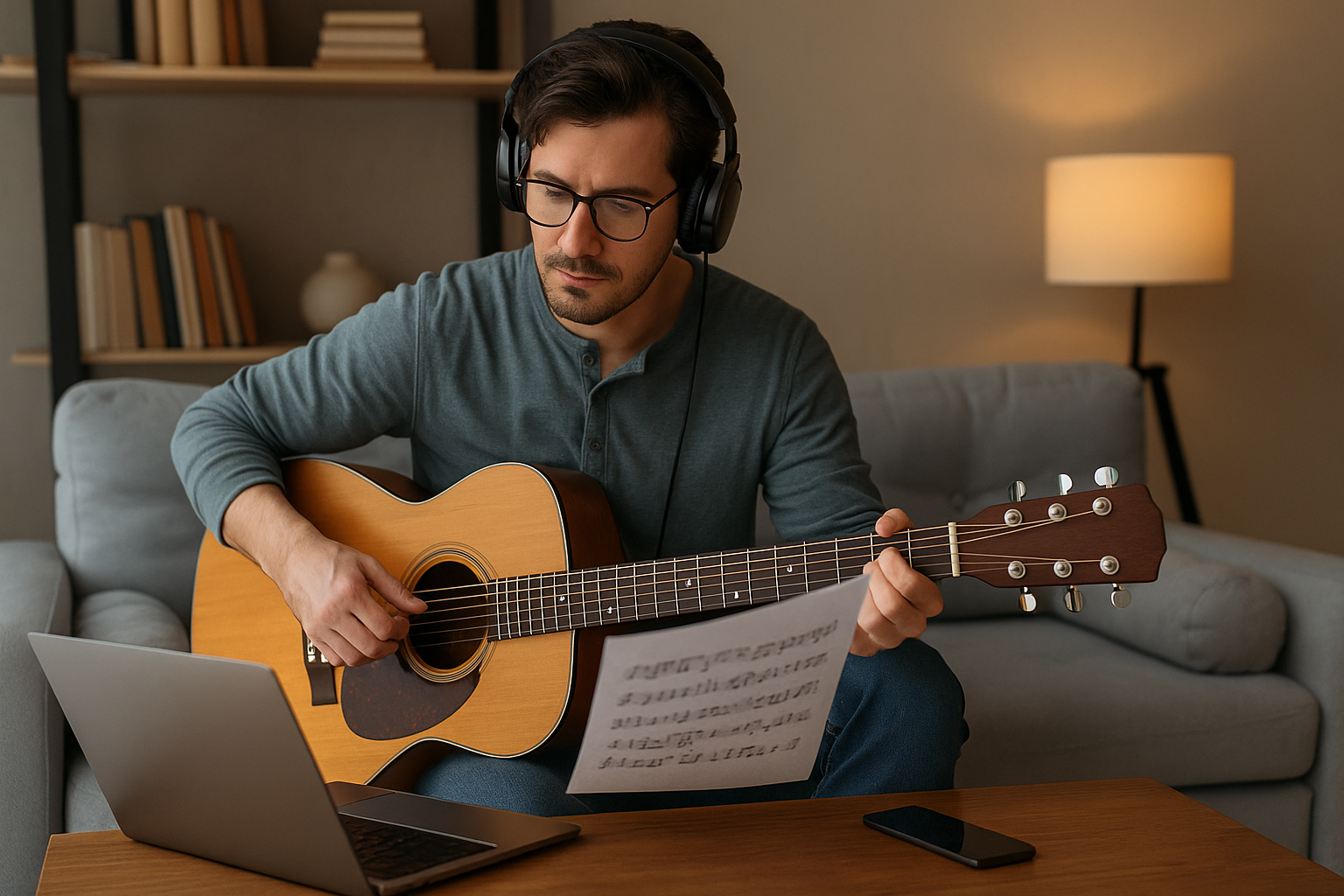One of the biggest challenges for beginners is finding time to practice music consistently. Between school, work, family, and other responsibilities, it can feel nearly impossible to dedicate enough hours to your instrument or voice training. The good news is that you don’t need endless free time to make progress. With the right strategies, you can learn music even with a packed schedule.
This article will give you practical tips on how to balance music learning with your busy life so that you can stay motivated, keep improving, and enjoy your musical journey without feeling overwhelmed.
Why Balance Matters
Learning music is like building a habit—it requires consistency more than intensity. Practicing for just 20 minutes every day is often more effective than cramming two hours once a week. But balance is key. If practice feels like a burden that competes with your responsibilities, you’re more likely to give up.
Balancing music with daily life ensures:
- Steady progress without burnout
- Time for both responsibilities and hobbies
- A positive mindset toward learning
- Long-term enjoyment of music
Step 1: Define Your Music Goals
Before diving into strategies, ask yourself: What do I want to achieve with music? Your goals will influence how you manage your time.
Examples of realistic goals for beginners:
- Learn three chords to play simple songs on guitar
- Practice one scale fluently on piano
- Sing on pitch for a favorite song
- Memorize and play a short melody
Clear goals help you prioritize practice sessions and focus on quality over quantity.
Step 2: Use Micro-Practice Sessions
If you’re short on time, remember this: something is better than nothing.
A five- or ten-minute focused practice can be surprisingly effective. For example:
- Run through a scale on your instrument
- Clap a rhythm exercise
- Practice a single tricky section of a song
- Warm up your voice with one exercise
The key is consistency. Micro-sessions done daily add up to significant progress.
Step 3: Create a Weekly Practice Plan
Instead of trying to practice randomly, create a simple, flexible plan that fits your schedule. Here’s an example for someone with 20–30 minutes per day:
- Monday: Warm-ups and scales
- Tuesday: Work on song verses
- Wednesday: Rhythm and timing practice
- Thursday: Focus on chorus or hard sections
- Friday: Combine song sections
- Saturday: Review the full piece
- Sunday: Fun playing or improvisation
A structured plan keeps you focused and prevents wasted time deciding what to practice.
Step 4: Use Dead Time Wisely
Even on busy days, there are moments of “dead time” you can use for music:
- Waiting in line? Practice rhythm by tapping your fingers.
- Commuting? Listen actively to a piece you want to learn.
- Cooking or cleaning? Sing scales or hum melodies.
These small moments reinforce learning and help you stay engaged.
Step 5: Combine Music with Other Activities
Pairing music practice with daily routines helps you stay consistent. Examples:
- Warm up your voice while showering.
- Do finger exercises while watching TV.
- Listen to your practice recordings while exercising.
Integrating music into your lifestyle makes it feel natural instead of forced.
Step 6: Focus on Quality, Not Quantity
It’s better to have one focused, distraction-free practice than a long, unfocused one. To ensure quality:
- Put your phone on silent (unless using it for practice).
- Set a timer so you stay present.
- Choose one or two things to work on, not everything at once.
Ten minutes of high-quality practice beats an hour of unfocused playing.
Step 7: Track Your Progress
Keeping a simple journal or using an app helps you stay accountable. Write down:
- What you practiced
- How it felt
- What improved
- What needs work
This makes your progress visible and motivating, especially when life gets busy.
Step 8: Learn to Say No
Sometimes, balancing music means protecting your practice time. If music is important to you, treat it like any other appointment. Saying no to unnecessary distractions or commitments gives you space to grow as a musician.
Step 9: Use Technology to Stay Consistent
There are plenty of free or affordable tools that save time and help you practice effectively:
- Metronome apps for rhythm training
- Tuner apps for quick instrument checks
- Recording apps for reviewing your practice
- Learning apps like Yousician or Simply Piano for structured lessons
These tools allow you to learn efficiently, even with limited time.
Step 10: Be Flexible and Kind to Yourself
Life is unpredictable. Some days you’ll have more time, and others you won’t be able to practice at all. That’s okay. Missing one day won’t ruin your progress. The key is to get back on track without guilt.
Consistency matters more than perfection.
A Realistic Beginner Schedule Example
Here’s how a beginner with a busy lifestyle might balance music practice:
- Monday–Friday: 15 minutes in the evening after work or school
- Saturday: 30–45 minutes (review everything)
- Sunday: 20 minutes of fun, playing your favorite song or experimenting
This schedule only adds up to a few hours per week, but with focus, it’s enough to see real improvement.
Mental Benefits of Balancing Music With Life
Beyond skill-building, balancing music has psychological benefits:
- Reduces stress after a long day
- Provides a sense of accomplishment
- Encourages creativity and problem-solving
- Gives you a healthy break from screens and routines
Music becomes a source of joy rather than another chore.
Final Thoughts: Progress Is Built on Consistency
Balancing music learning with a busy schedule is about working smarter, not harder. With small, consistent sessions, smart use of free time, and clear goals, anyone can make steady progress—even with the busiest lifestyle.
Remember: it’s not about how many hours you practice, but how often and how intentionally you do it. Keep music as a joyful part of your life, and it will reward you with growth, relaxation, and endless inspiration.
